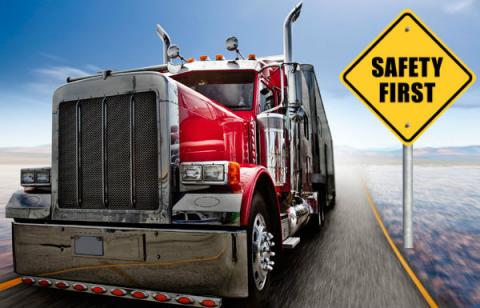
Walk through the exhibit hall at any trucking convention today and you might think you’ve stepped into a technology convention by mistake. You can see GPS devices, collision avoidance cameras, rollover prevention devices, mobile apps, systems to track and monitor driver and vehicle performance, and onboard computers that could be driving the trucks of the future.
The fact is, transportation and logistics companies are now some of the most voracious consumers of technology. That means ever increasing amounts and types of data are available to fleet managers and drivers to make better real-time decisions. It’s been a boon for efficiency, fuel costs, and customer service.
But improved safety is one of the biggest benefits of technology.
Every trucking company knows that the most important component of a safe operation is the driver behind the wheel. Carriers are under a lot of pressure to hire safe drivers, properly train and coach them, reward the good drivers they have, and give their drivers the necessary tools and working conditions to stay safe on the road. Technology is making that easier. Some of the most common safety tools in use today include:
- In-cab video cameras that capture footage of the driver to create a real-time record of what’s happening inside the truck.
- In-cab navigation systems that can reduce driver distraction and confusion over where they’re going.
- Collision avoidance systems that help maintain a constant distance between a truck and any vehicle in front of it.
- Roll stability control technology that uses sensors to monitor vehicle dynamics, provide an estimate of truck stability, and detect a rollover risk, automatically slowing the truck down to a safer speed.
- Lane departure warning systems that warn a driver if he or she attempts to enter another lane without signaling at a certain speed.
Here are three ways technology can improve your fleet safety:
- Better maintenance monitoring. Unsafe vehicles are often the result of poor maintenance. Technology helps maintenance managers keep vehicle servicing on schedule and identify problems that require immediate attention. That can prolong the life of vehicles, reduce depreciation costs, reduce safety hazards, and prevent expensive breakdowns and downtime.
- More efficient safety initiatives. In the past, many fleet owners have taken a “hit-or-miss” approach to implementing safety standards or stayed in reactive mode, only responding when an accident occurred or somebody filed a complaint about poor driving. Technology now allows fleet managers to monitor their fleet in real time and receive alerts for events that can be handled immediately rather than waiting for them to turn into bigger issues – like an accident or a lawsuit.
- More focused safety coaching. Technology can give fleet owners greater insight into a wide range of safety metrics, monitoring key events for each driver such as safety belt use, harsh braking or acceleration, speeding, engine revving, and Hours of Service (HOS) compliance. By monitoring individual driver performance for specific metrics, fleet owners and safety managers can customize their coaching based on each driver’s needs, making your safety training initiatives more effective and efficient.
What’s ahead for trucking technology?
Technology will continue to transform the trucking industry, and those who use it and manage it the most efficiently will have a safer fleet and a competitive advantage.
Another way to get a competitive advantage is to partner with an insurance partner who understands your unique risks and operations. At Heffernan Insurance Brokers, the transportation industry is one of our specialties. Contact one of our transportation insurance specialist today.
- Log in to post comments
